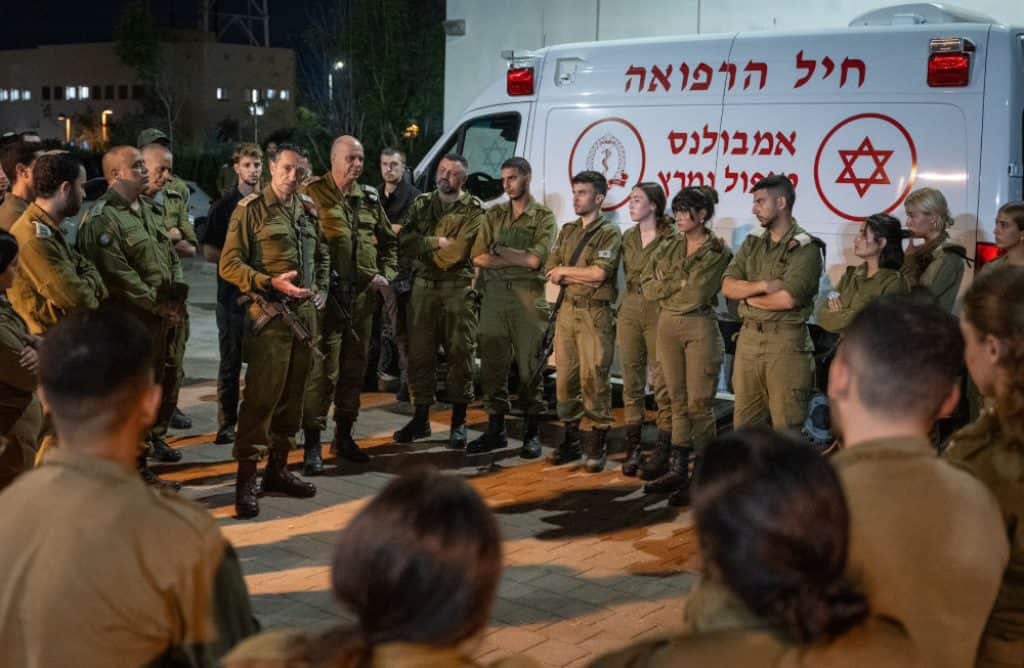
On October 13, a Hezbollah kamikaze drone struck an Israel Defense Forces (IDF) training base near the Israeli town of Binyamina, south of Haifa. The drone killed four IDF soldiers and severely wounded another seven. Fifty others were wounded in the attack, making it the highest casualty toll from a Hezbollah drone attack since the war began.
The attack comes as the Iranian-backed terrorist group continues to carry out widespread rocket attacks on Israel daily. On October 10, 190 projectiles were launched by Hezbollah and entered Israeli airspace. The next day, 230 were launched. Over the Yom Kippur holiday, which began on the evening of October 11 and ended on the evening of the 12, the IDF said 320 projectiles, mostly rockets, flew into Israel from Lebanon. More than 100 rockets were launched on October 13, and the IDF said that a total of 90 projectiles had crossed into Israel from Lebanon on October 14 by five in the afternoon.
Hezbollah has used one-way attack drones throughout the war. Approximately 200 drones, also called unmanned aerial vehicles (UAVs), struck Israel by August 2024. Hezbollah was estimated to have at least 2,000 UAVs of varying types in 2021, according to a study by the Alma Research and Education Center, which follows Hezbollah threats. It is plausible the group has increased its arsenal and improved the drones’ capabilities since 2021.
The precision strike on the IDF training base may be an example of improved accuracy. Hezbollah has also carried out similar strikes aiming at IDF soldiers in a soccer field in northern Israel in June and targeting a building in Arab al-Aramshe in northern Israel in April. The group also hit a large Israeli surveillance balloon in May 2024. Some of the strikes indicate that Hezbollah collected intelligence on the sites before targeting gatherings of soldiers in locations where they are not always present.
The October 13 drone attack on the Golani Brigade Training Base targeted a dining hall where IDF soldiers were eating. Reports say the drone hit the site after seven in the evening when individuals would have been there in large numbers. On October 14, IDF released the names of the four fallen soldiers, all of them age 19, who were killed in the attack. “The incident is being examined,” the IDF said. Israel Minister of Defense Yoav Gallant said, “We must investigate it, study the details, and implement lessons in a swift and professional manner.”
IDF Chief of Staff Herzi Halevi visited the site of the attack and spoke with commanders and medical teams at the base, the IDF added. “We are at war, and an attack on a training base on the home front is difficult and the results are painful. You operated well to treat and evacuate the wounded and injured. Embrace the bereaved families, accompany the wounded and strengthen the commanders and soldiers.” Halevi also praised the Golani Brigade for its role throughout the war. The brigade suffered high casualties in two of its battalions on the Gaza border on October 7. Its soldiers have also been fighting in Lebanon since the IDF announced Operation Northern Arrows on September 23.
The IDF continued operations in Lebanon between October 11 and 14. Israeli Prime Minister Benjamin Netanyahu called on the UN peacekeepers in southern Lebanon from the United Nations Interim Force In Lebanon (UNIFIL) to withdraw from areas where there is fighting. The IDF also called on many Lebanese villages south of the Litani River to be evacuated. Most residents have already fled. The approximately 10,000 UNIFIL troops from several countries are now caught in the middle of fighting between the IDF and Hezbollah. The IDF also said it found weapons and munitions close to a UNIFIL post in southern Lebanon.
Gallant spoke with US Secretary of Defense Lloyd Austin on October 14 about the Hezbollah drone attack. “Minister Gallant highlighted the severity of the attack and the forceful response that would be taken against Hezbollah. In this regard, Minister Gallant reiterated the ongoing threats posed by Hezbollah and the importance of operating to dismantle the organization’s attack infrastructure,” according to a statement from the minister of defense’s office.
On October 13, Gallant visited northern Israel and pointed out areas where the IDF was operating. “These are military targets containing underground tunnels and weapon storages—our troops found hundreds of RPGs, munition, and anti-tank missiles here. The IDF is currently destroying these means above and under the ground,” he said. The IDF continues to increase operations in southern Lebanon. Reports indicate that as the ground campaign has expanded, Israel’s airstrikes in Beirut have become less intense between October 11 and October 14.







